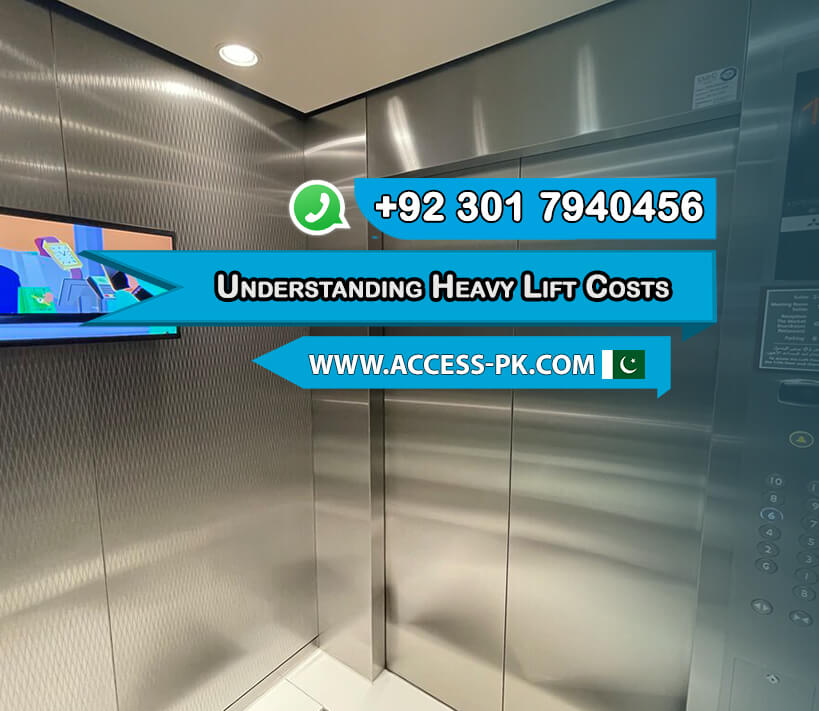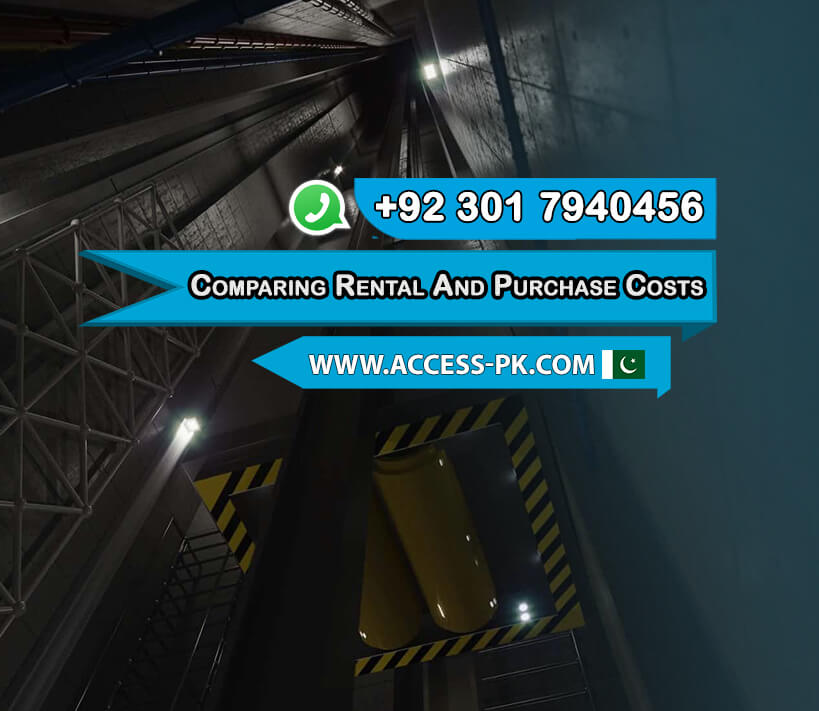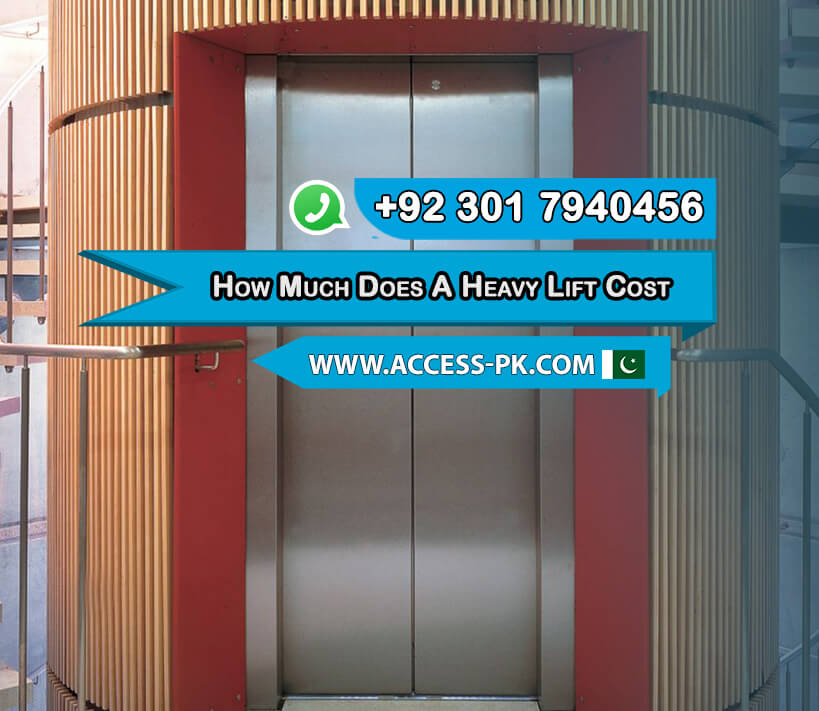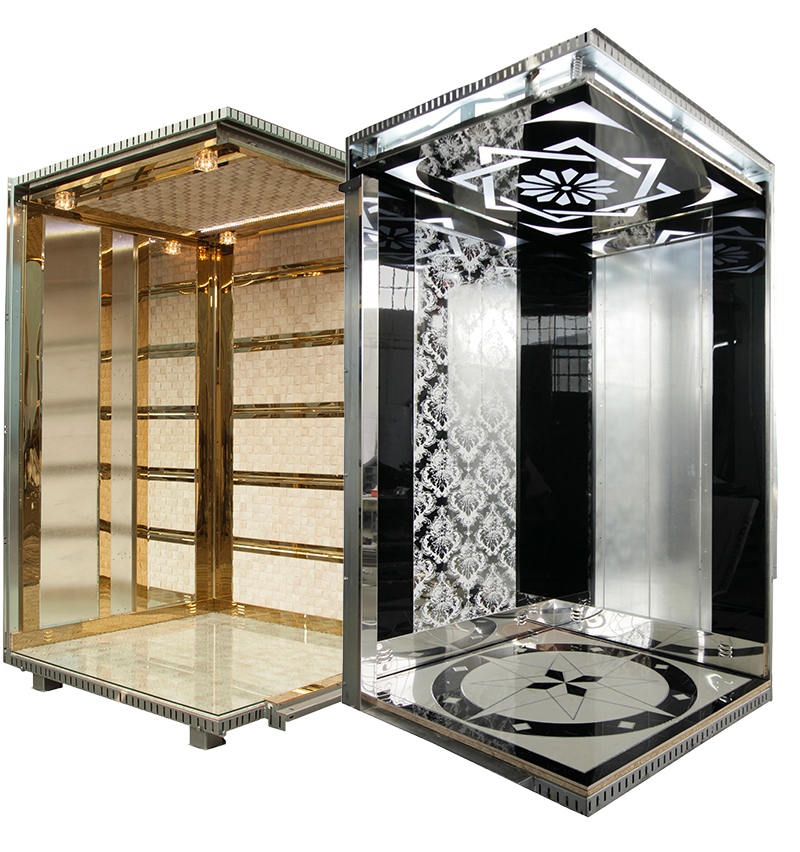Access Technologies, owned by Imran Rafi, offers comprehensive solutions for heavy lifting needs. Understanding the cost of a heavy lift involves several key factors. These include the type of lift, its capacity, and the duration of use. Additionally, geographic location and specific job requirements significantly influence pricing. Businesses must consider these elements to estimate expenses accurately. This comprehensive understanding helps in making informed decisions.
Various factors influence heavy lift costs. First, the type of lift and its capacity are crucial. Lifts designed for heavier loads typically cost more due to their advanced technology and increased power. Second, the duration of use affects the overall cost. Long-term rentals or purchases generally offer better rates compared to short-term rentals. Third, the project’s location can add to the cost due to transportation and logistics.
Comparing rental and purchase costs is essential for budgeting. Renting a heavy lift can be more economical for short-term projects, eliminating maintenance and storage costs. However, purchasing a heavy lift becomes more cost-effective for long-term use, providing an asset to the company. Weighing these options helps businesses decide the best financial strategy. Understanding these factors ensures a comprehensive approach to managing heavy lift expenses.
Get Free QuotesUnderstanding Heavy Lift Costs: An Overview

Understanding heavy lift costs is crucial for businesses that rely on this equipment. Heavy lifts, integral to various industries, come with significant expenses influenced by multiple factors. Access Technologies, owned by Imran Rafi, provides comprehensive heavy-lifting solutions, ensuring businesses maximise their investment. To grasp the heavy lift cost, one must consider the type and capacity of the lift, the project’s duration, and the geographic location. Each factor plays a vital role in shaping the overall expense.
Furthermore, businesses must weigh the benefits of renting versus purchasing, as both options have distinct financial implications. By analyzing these elements, companies can make informed decisions that align with their operational and financial goals. Understanding potential hidden fees, such as delivery, setup, insurance, and maintenance costs, can prevent unexpected financial surprises. With a thorough understanding of these aspects, businesses can better plan and budget for their heavy-lifting needs, ensuring efficient and cost-effective operations.
What Are Heavy Lifts?
Heavy lifts are specialized equipment for moving, lifting, and transporting substantial loads. These machines are essential in construction, manufacturing, and logistics industries, where handling heavy materials is routine. The term “heavy lift” encompasses various types of machinery, including cranes, forklifts, and hoists, each designed for specific lifting requirements. The capacity of these lifts can vary significantly, with some capable of handling loads exceeding several tons. Heavy load lift prices can fluctuate based on the complexity and capability of the equipment. Understanding the different types of heavy lifts and their applications is the first step in estimating the associated costs accurately.
Estimating Costs Accurately
Accurately estimating heavy lift costs requires a comprehensive understanding of several factors. The type of lift and its capacity are primary considerations. For instance, a crane with a higher load capacity will naturally incur higher costs due to its advanced technology and increased power. Additionally, the lift’s use duration significantly impacts the overall expense. Long-term rentals or purchases typically offer better rates compared to short-term rentals. Geographic location also plays a crucial role, as transportation and logistical expenses vary widely. By considering these elements, businesses can develop more precise cost estimates, aiding in better financial planning and resource allocation.
Factors Affecting Costs
Several key factors influence the heavy lift cost. First, the type and capacity of the lift are essential. Lifts designed for heavier loads cost more due to their enhanced features and capabilities. Second, the duration of the project affects the overall cost. Long-term rentals or purchases often provide more favourable rates than short-term rentals. Third, the project’s location can add to the expense due to transportation and logistics. Additionally, hidden fees such as delivery, setup, insurance, and maintenance can significantly impact the total cost. Understanding these factors helps businesses budget more effectively and avoid unexpected financial surprises.
Get Free QuotesKey Factors Influencing Heavy Lift Costs

Several key factors influence heavy lift costs. Firstly, the type and capacity of the lift play a significant role. Lifts designed for heavier loads or specialized tasks generally come with higher prices due to their advanced technology and increased power. Secondly, the duration of use impacts the overall cost. Long-term rentals or purchases typically offer more favourable rates than short-term rentals, making them a more economical option for extended projects. Additionally, the project’s geographic location can add to the expense, as transportation and logistics costs can vary widely depending on the distance and accessibility of the site.
| Elevator Type | Cost |
|---|---|
| Maxima Wireless Heavy Duty Column Lift | 278000 to 27850000 PKR |
| Heavy Duty Hydraulic Scissor Lift | 167000 to 270000 PKR |
| Electric Heavy Duty Truck Bus 4 Post Car Elevator Lift | 974000 to 2750000 PKR |
| Maxima Heavy Duty Column Lift | 278000 to 27850000 PKR |
Other critical factors include hidden fees such as delivery, setup, insurance, and maintenance costs. These additional expenses can significantly impact the total heavy lift cost, often catching businesses off guard if not accounted for during budgeting. Furthermore, the job’s specific requirements, such as the need for specialized attachments or configurations, can also affect pricing. By understanding and considering these factors, businesses can develop more accurate cost estimates and make informed decisions about their heavy-lifting needs. This comprehensive approach ensures that all potential expenses are accounted for, helping to prevent unexpected financial surprises and ensuring efficient resource allocation.
Get Free QuotesHeavy Lifts By Access Technologies

Access Technologies, owned by Imran Rafi, offers a wide range of heavy lifts tailored to meet the diverse needs of various industries. Their extensive selection includes cranes, forklifts, and hoists, each designed for specific lifting requirements. Understanding the heavy lift cost associated with these machines is crucial for businesses planning their budgets. Access Technologies provides detailed information on heavy load lift prices, helping clients make informed decisions based on their needs and project requirements. Their commitment to quality and customer satisfaction ensures businesses receive reliable and efficient equipment for their heavy lifting tasks.
In addition to offering high-quality heavy lifts, Access Technologies provides comprehensive support services, including delivery, setup, maintenance, and insurance options. These services are designed to enhance their equipment’s overall value and efficiency, reducing downtime and ensuring smooth operations. By choosing Access Technologies, businesses can benefit from their expertise and extensive industry knowledge, gaining access to top-notch equipment and exceptional customer service. Understanding the heavy lift cost and the additional services provided by Access Technologies enables businesses to make well-informed decisions, ensuring their heavy lifting needs are met effectively and economically.
Get Free QuotesComparing Rental and Purchase Costs

Several factors come into play when comparing rental and purchase costs for heavy lifts. Renting a heavy lift can be more cost-effective for short-term projects, eliminating the need for significant upfront investment. This option also includes maintenance and repair costs, often covered by the rental company, reducing the burden on the business. On the other hand, purchasing a heavy lift becomes more advantageous for long-term projects or frequent use. Owning the equipment can lead to substantial savings over time despite the higher initial expenditure.
Moreover, ownership allows for greater flexibility and control over the equipment, ensuring it is always available when needed. Businesses must carefully evaluate their needs and financial situation to make the best decision. By weighing the benefits of renting against the advantages of purchasing, companies can develop a strategy that aligns with their operational goals and budget constraints, ensuring efficient and cost-effective heavy-lifting solutions.
Rental Benefits
Renting heavy lifts offers several significant benefits, particularly for short-term projects. One of the primary advantages is the lower upfront heavy lift cost. Businesses can avoid the substantial initial investment required to purchase equipment, freeing up capital for other critical expenses. Additionally, rental agreements often include maintenance and repair services, which can significantly reduce the overall heavy load lift prices. This arrangement ensures the equipment is always in optimal working condition, minimizing downtime and enhancing productivity.
Furthermore, renting provides flexibility, allowing businesses to choose different types of lifts as needed for various projects. This adaptability ensures that the right equipment is always available, tailored to the specific requirements of each job. Companies can efficiently manage their heavy-lifting needs by opting for rentals without the long-term financial commitment associated with purchasing.
Purchase Advantages
Purchasing heavy lifts also presents several advantages, especially for businesses with long-term or frequent heavy lifting needs. Although the initial heavy lift cost is higher, owning the equipment can lead to significant savings over time. Once the purchase is made, no recurring rental fees can accumulate quickly in long-term projects. Ownership also provides greater control over the equipment, ensuring it is available whenever needed without the constraints of rental agreements. Additionally, owning heavy lifts can be an asset to the company, potentially increasing its overall value. Businesses can customize and maintain their equipment to meet specific operational requirements, enhancing efficiency and productivity. Understanding these purchase advantages helps businesses make informed decisions about investing in heavy lifting equipment and balancing upfront costs with long-term benefits.
Making the Decision
Deciding between renting and purchasing heavy lifts requires carefully analysing the project’s duration, frequency of use, and financial considerations. For short-term or infrequent projects, renting may be the most cost-effective option, offering flexibility and reducing the burden of maintenance and repair costs. However, purchasing may offer more significant economic benefits for long-term projects or frequent use, providing substantial savings over time and more control over the equipment. To make the best choice, businesses must consider the total heavy lift cost, including hidden fees and potential long-term savings. By evaluating the specific needs and financial situation, companies can develop a strategic approach to heavy lifting, ensuring efficient and cost-effective operations. Understanding both options’ benefits and drawbacks allows businesses to make well-informed decisions that align with their operational goals and budget constraints, optimizing their heavy-lifting solutions.
Get Free Quotes



